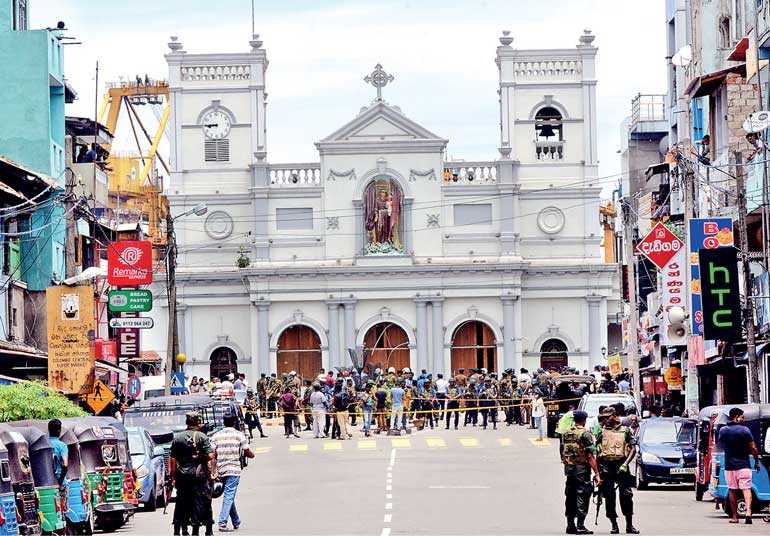Tuesday Mar 04, 2025
Tuesday Mar 04, 2025
Thursday, 25 April 2019 00:00 - - {{hitsCtrl.values.hits}}

Trade-offs that are central to public policy are best understood with specific examples, ideally real-world cases rather than made-up ones. The recent request by the Police that those leaving unattended vehicles on the road display their names and contact telephone numbers is a good case that helps illuminate the trade-offs that have to be made in formulating and implementing data protection.
Privacy
Most people think they know what privacy is, but have difficulty providing a comprehensive definition.
The legal scholar Daniel Solove states that privacy, as commonly understood, “is a sweeping concept, encompassing (among other things) freedom of thought, control over one’s body, solitude in one’s home, control over personal information, freedom from surveillance, protection of one’s reputation, and protection from searches and interrogations.”
At an abstract level, privacy can be defined in terms of boundary control by individuals. But since this definition is anchored on contextual and negotiated decisions by individuals, it is difficult to translate into practical policy.
A telephone number, even if unattached to a name and address, allows a person to be contacted. It can infringe on the oft-quoted “right to be let alone”. It can make boundary control difficult, and thereby infringe privacy however defined. In the old days, telephone numbers carried more weight. It was difficult to get one, and to change once one had one. Where reverse telephone directories or lookup services exist, a simple telephone number can lead to exposure of name and address as well. In Sri Lanka, these services are not easily accessible. And while not costless, changing a mobile number is not as difficult as in the old days.
Trade-offs
But people understand trade-offs. In a time of terror when vehicles can be booby traps, they know it is reasonable for the Police to want to know who is responsible for an unattended vehicle in public space.

But leaving the name and phone number displayed on the vehicle allows it to be seen by anyone, not just the Police. And because a vehicle has a number associated with it, an observer would now have two numbers associated with the vehicle owner/user. In the interest of public safety, a rather large amount of personally identifiable information (PII) would have been disclosed to any and all.
Now imagine a different scenario that seeks to balance public safety and the safeguarding of PII in the context of unattended vehicles. Every police officer would be equipped with a handheld device that could be pointed at the number plate and would immediately connect to a database at the Department of Motor Vehicles (DMV) to provide not only the owner’s details but also a contact telephone number. Here, the telephone number would not be disclosed to any and all, but only to law-enforcement officials. The fact that the record was accessed and by whom could be logged.
It is likely that the creation of such a database, the inclusion of mobile phone numbers and the provision of handheld devices to all police officers would be met with protests. Linking vehicle numbers and telephone numbers is an unjustified intrusion, it will be said; allowing thousands of police officers immediate access to a database containing PII without court order would be a violation of privacy, it will be claimed; information given to the DMV can only be used for its purposes and not for purposes of the Police, it would be argued; in any case, consent would have to be obtained for such a secondary use, it will be asserted.
Context matters
No objection to a paper-based improvised system that poses significant threats to privacy, but objections to an efficient electronic system that arguably provides greater safeguards. Why?
One reason is timing and context. The paper-based system is announced at a time of terror. The public is more understanding of the needs of public safety and privacy advocates are silent. The electronic system takes time to implement and cannot be activated in the midst of a crisis. It will be announced in a peaceful, normal context. Privacy means different things in times of tranquility and terror.
And new technology triggers more fears than old, even if it has more safeguards.
But shouldn’t we be more rational about these things?
Discover Kapruka, the leading online shopping platform in Sri Lanka, where you can conveniently send Gifts and Flowers to your loved ones for any event including Valentine ’s Day. Explore a wide range of popular Shopping Categories on Kapruka, including Toys, Groceries, Electronics, Birthday Cakes, Fruits, Chocolates, Flower Bouquets, Clothing, Watches, Lingerie, Gift Sets and Jewellery. Also if you’re interested in selling with Kapruka, Partner Central by Kapruka is the best solution to start with. Moreover, through Kapruka Global Shop, you can also enjoy the convenience of purchasing products from renowned platforms like Amazon and eBay and have them delivered to Sri Lanka.
Discover Kapruka, the leading online shopping platform in Sri Lanka, where you can conveniently send Gifts and Flowers to your loved ones for any event including Valentine ’s Day. Explore a wide range of popular Shopping Categories on Kapruka, including Toys, Groceries, Electronics, Birthday Cakes, Fruits, Chocolates, Flower Bouquets, Clothing, Watches, Lingerie, Gift Sets and Jewellery. Also if you’re interested in selling with Kapruka, Partner Central by Kapruka is the best solution to start with. Moreover, through Kapruka Global Shop, you can also enjoy the convenience of purchasing products from renowned platforms like Amazon and eBay and have them delivered to Sri Lanka.